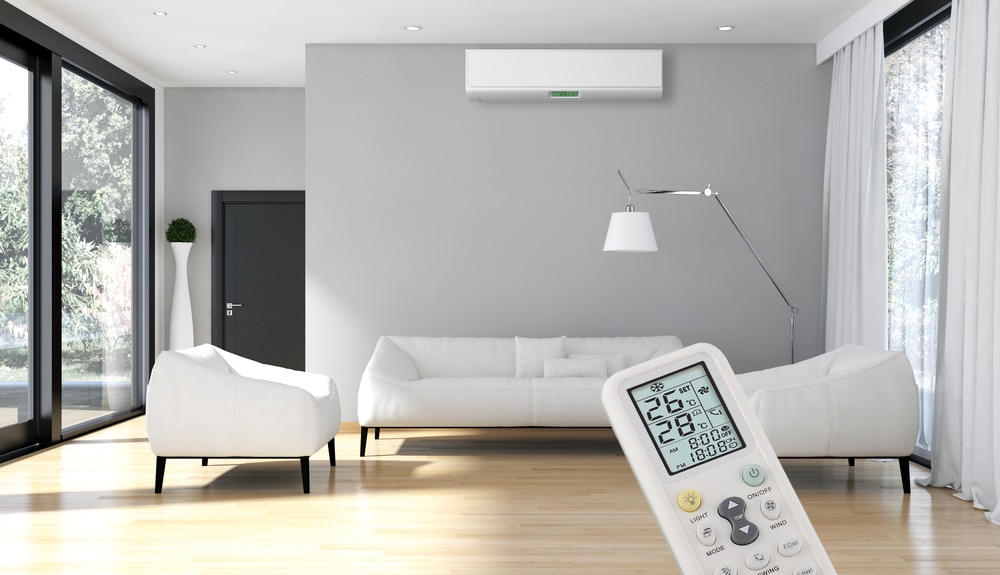Home Owner Guide Entry: Air-Conditioning
Home Owner Use and Maintenance Guidelines
Air-conditioning can greatly enhance the comfort of your home, but if you use it improperly or inefficiently, wasted energy and frustration will result. These hints and suggestions are provided to help you maximize your air-conditioning system. Your air-conditioning system is a whole-house system. The air-conditioner unit is the mechanism that produces cooler air. The air-conditioning system involves everything inside your home including, for example, drapes, blinds, and windows. Your home air-conditioning is a closed system, which means that the interior air is continually recycled and cooled until the desired air temperature is reached. Warm outside air disrupts the system and makes cooling impossible. Therefore, you should keep all windows closed. The heat from the sun shining through windows with open drapes is intense enough to overcome the cooling effect of an airconditioning system. For best results, close the drapes on these windows. Time affects your expectations of an air-conditioning unit. Unlike a light bulb, which reacts instantly when you turn on a switch, the air-conditioning unit only begins a process when you set the thermostat. For example, if you come home at 6 p.m. when the temperature has reached 90 degrees Fahrenheit and set your thermostat to 75 degrees, the air-conditioning unit will begin cooling but will take much longer to reach the desired temperature. During the whole day, the sun has been heating not only the air in the house, but the walls, the carpet, and the furniture. At 6 p.m. the air-conditioning unit starts cooling the air, but the walls, carpet, and furniture release heat and nullify this cooling. By the time the air-conditioning unit has cooled the walls, carpet, and furniture, you may well have lost patience. If evening cooling is your primary goal, set the thermostat at a moderate temperature in the morning while the house is cooler and allow the system to maintain the cooler temperature. You can then slightly lower the temperature setting when you arrive home, with better results. Once the air conditioner is operating, setting the thermostat at 60 degrees will not cool the home any faster, and it can result in the unit freezing up and not performing at all. Extended use under these conditions can damage the unit.
Adjust Vents
Maximize air flow to occupied parts of your home by adjusting the vents. Likewise, when the seasons change, readjust them for comfortable heating.
Compressor Level
Maintain the air-conditioning compressor in a level position to prevent inefficient operation and damage to the equipment. See also entry for Grading and Drainage.
Humidifier
If a humidifier is installed on the furnace system, turn it off when you use the air-conditioning; otherwise, the additional moisture can cause a freeze-up of the cooling system.
Manufacturer’s Instructions
The manufacturer’s manual specifies maintenance for the condenser. Review and follow these points carefully. Because the air-conditioning system is combined with the heating system, also follow the maintenance instructions for your furnace as part of maintaining your air-conditioning system.
Temperature Variations
Temperatures may vary from room to room by several degrees. This difference results from such variables as floor plan, orientation of the home on the lot, type and use of window coverings, and traffic through the home.
Troubleshooting Tips: No Air-Conditioning
Before calling for service, check to confirm the following situations:● Thermostat is set to cool, and the temperature is set below room temperature.● Blower panel cover is set correctly for the furnace blower (fan) to operate. Similar to the way a clothes dryer door operates, this panel pushes in a button that lets the fan motor know it is safe to come on. If that button is not pushed in, the fan will not operate.● Air-conditioner and furnace circuit breakers on the main electrical panel are on. (Remember if a breaker trips you must turn it from the tripped position to the off position before you can turn it back on.)● The 220 volt switch on the outside wall near the air conditioner is on.● Switch on the side of the furnace is on.● The fuse in furnace is good. (See manufacturer literature for size and location.)● A clean filter allows adequate air flow. Vents in individual rooms are open.● Air returns are unobstructed.● The air conditioner has not frozen from overuse.● Even if the troubleshooting tips do not identify a solution, the information you gather will be useful to the service provider you call.
[Builder] Limited Warranty Guidelines
The air-conditioning system should maintain a temperature of 78 degrees or a differential of 18 degrees from the outside temperature, measured in the center of each room at a height of five feet above the floor. Lower temperature settings are often possible, but neither the manufacturer nor [Builder] guarantees them.
Compressor
The air-conditioning compressor must be in a level position to operate correctly. If it settles during the warranty period, [Builder] will correct this situation.
Coolant
The outside temperature must be 70 degrees Fahrenheit or higher for the contractor to add coolant to the system. If your home was completed during winter months, this charging of the system is unlikely to be complete, and [Builder] will need to charge it in the spring. Although we check and document this situation at orientation, we welcome your call to remind us in the spring.
Nonemergency
Lack of air-conditioning service is not an emergency. Air-conditioning contractors in our region respond to air-conditioning service requests during normal business hours and in the order they receive them.
Air-Conditioning Home Owner Guide – Air-Conditioning Home Owner Guide –
[xyz-ips snippet=”download-snippet”]

